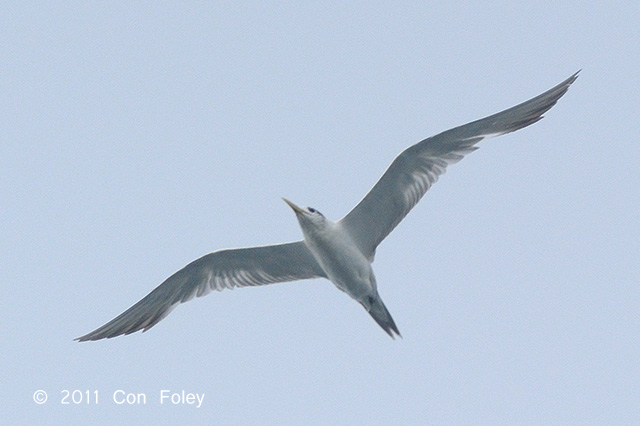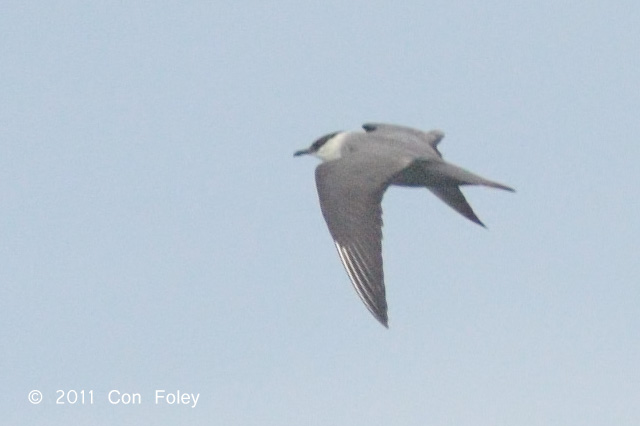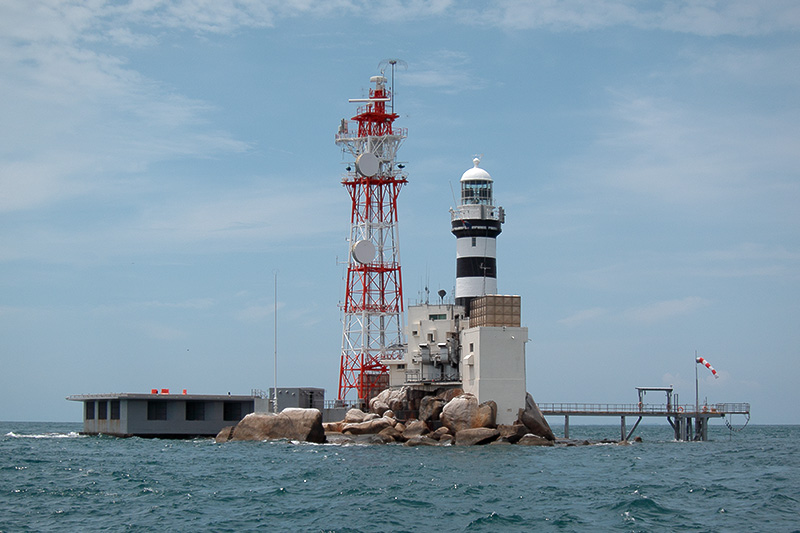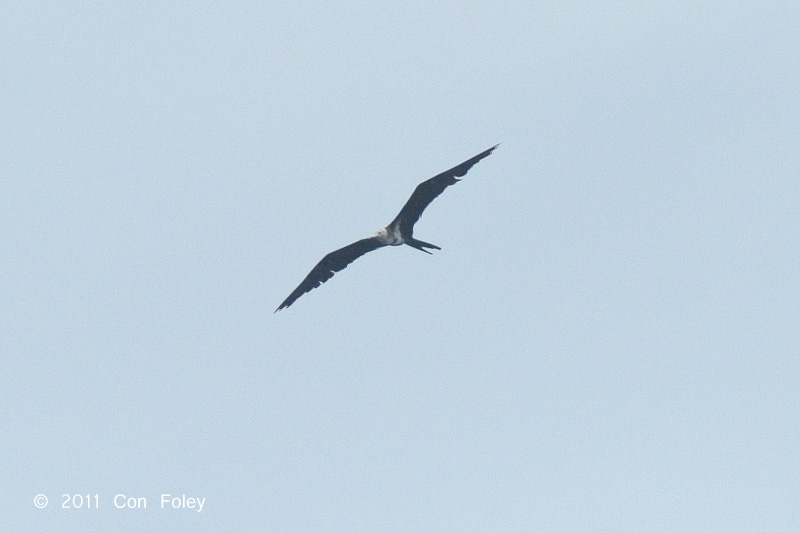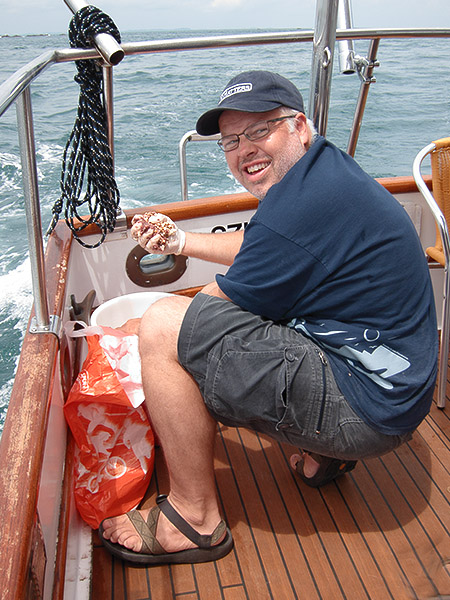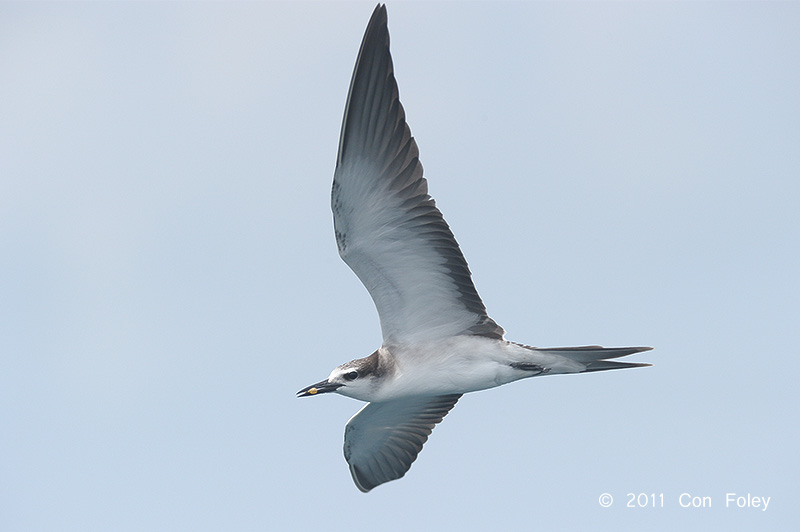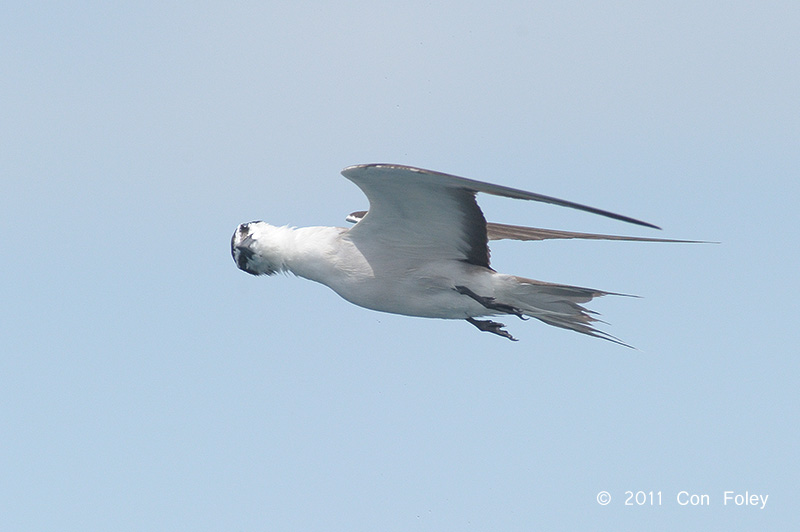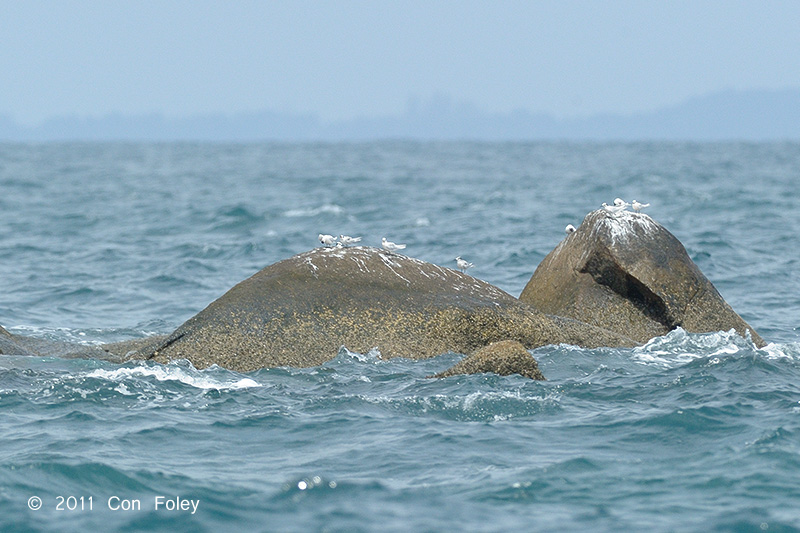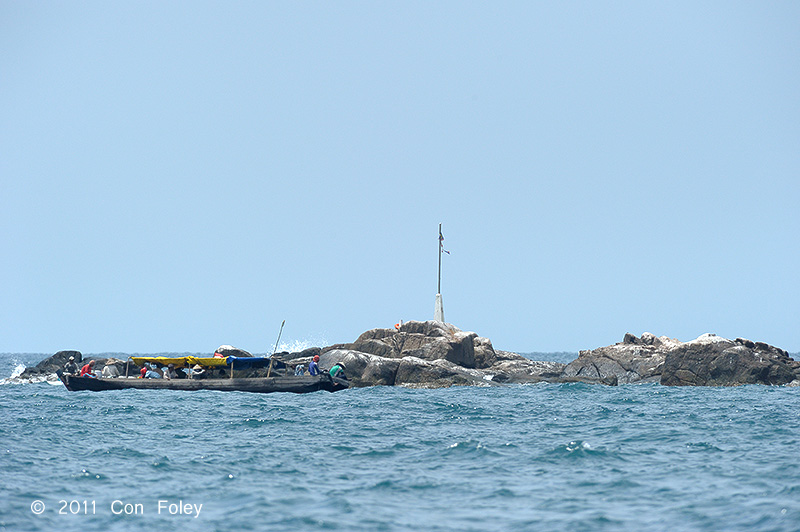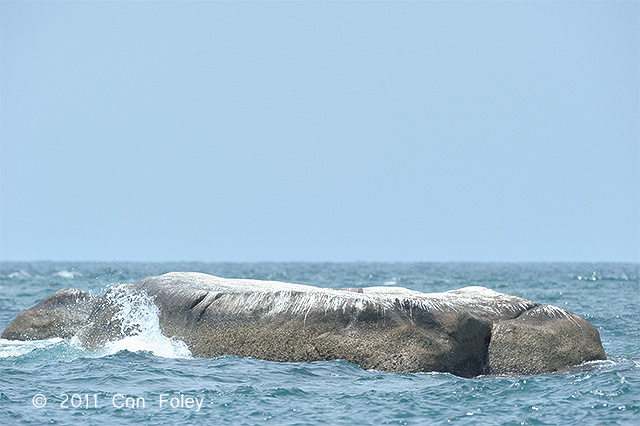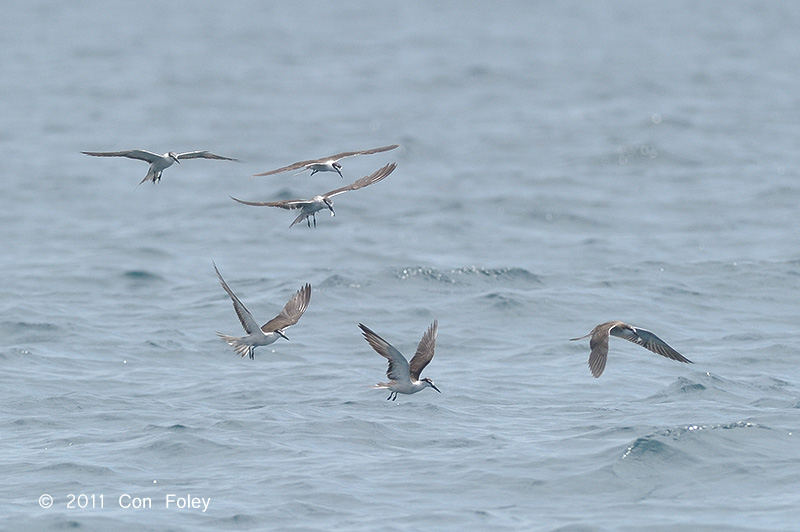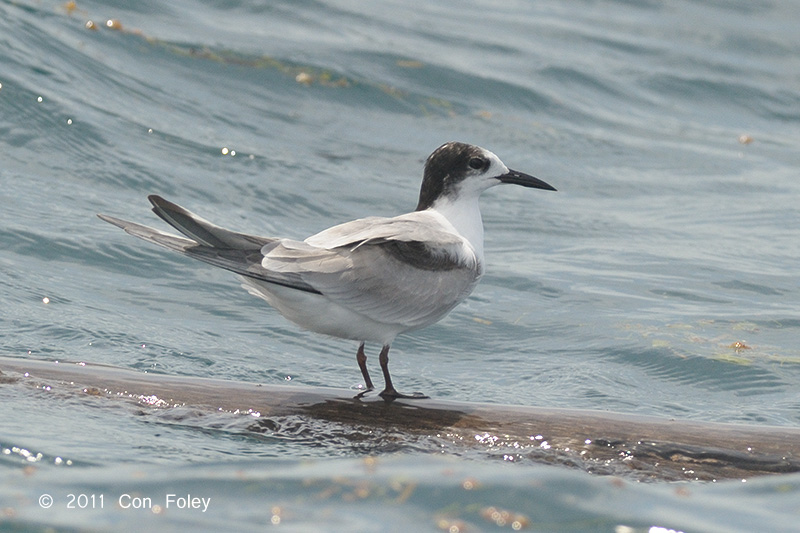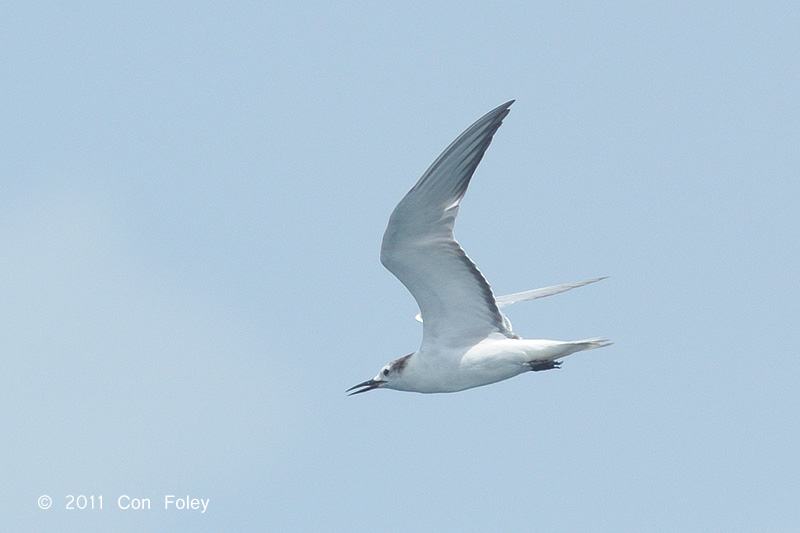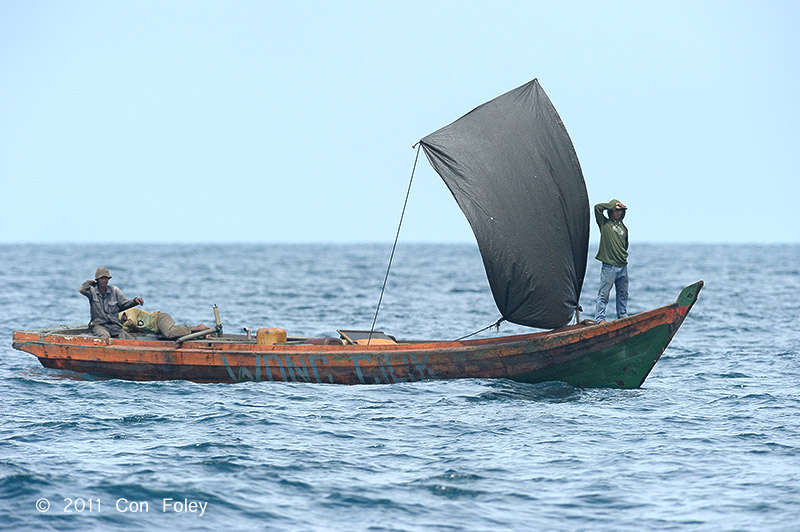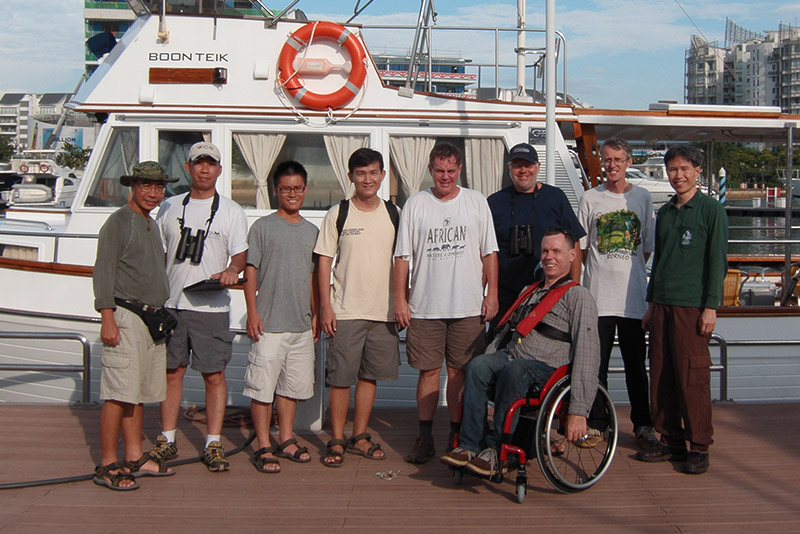Nine seafaring individuals gathered as usual at 6:00am at One Degree Fifteen Marina and were off for our monthly outing. It is amazing the difference a month can make. Our July outing was a low point in numbers and diversity, we were not sure what to expect for this trip, but felt it also might be low in count, and hence a not very important month. Perhaps for that reason, this trip was selected to be the long trip out to Horsburgh Lighthouse, and Geoff Davison put in yeoman’s effort gaining approval from all the relevant authorities.
We were not underway for long when we starting picking up Bridled Terns clearly passing through the Straits to the East, and not just a few, many. Little did we know it then, but this would be the high count species, with several hundred recorded for the day. Also amoung the early birds was a Greater Crested (Swift) Tern, what amazing long wings they have!
Around quarter past nine a Long-tailed Skua was spotted in more adult plumage than the one seen in the October 2010 trip.
The skua was seen near or a bit beyond where we normally turn back. Thanks to Colin for the map!
Then, around 11 am, still enroute to Horsburgh, a funny thing happened. A Lesser Frigatebird was spotted overhead. This was a lifer for several of us, unfortunately it was very high. We were hoping it was a Christmas Island Frigatebird, but aftermuch pouring over the books and later reviewing the images it was determined to be a Lesser. Clearly in Malyasian / Indonesian waters, no hope of a Singapore record. Marked on the map above.
Around Noon we reached Horsburgh. Again thanks to the arrangements made by Geoff, the lighthouse keepers were unconcerned with our presence because they knew we were coming.
But before we could settle into watching the anticipated terns, another frigatebird was spotted high above the lighthouse, this time clearly in Singapore waters; and another Lesser Frigatebird as it turned out and a different individual based upon missing primaries. After a few mintues of watching this bird high above it veered off towards Bintam.
Back to the main purpose of visiting Horsburgh, observing the Bridled Terns. Now if on some future trip we could get permission to land 🙂 we could observe the colony of terns more closely! There were lots of Bridled Terns both adults and juveniles, it would seem nesting was completed and all the young had fledged, but the adults were still catching fish to feed to the youngsters. Here we decided to put the chum in the water, and here’s Rob preparing the worst popcorn you can imagine!
And it worked! It seems the juvenile Bridled Terns will eat anything, here’s one having a snack of popcorn!
There were lots of Bridled Terns, perhaps a hundred at this location. They really put on quite a show for us, I have no idea what this bird was doing, but it was rather amusing!
There were also ten or more Black-naped Terns. They were easy to spot, much smaller and overall whitish appearance. When not flying around and fishing, they tended to perch on rocks on the West side of the lighthouse, removed from the Bridled Terns who claimed everywhere else! It would be interesting to know it the Black-naped Terns also breed here, but we just don’t know.
After watching the terns for the better part of an hour, we decided to explore the surroundings. Horsburgh Lighthouse is built on Pedra Blanca which the Portugese put on shipping charts to refer to the white rocks from all the bird droppings. So clearly the terns having been using these rocks for many hundreds of years and the presence of man and the lighthouse has not detered them.
A nearby set of rocks known as Middle Rocks belongs to Malaysia. In this photo some Indonesian fisherman were passing close by the largest of Middle Rocks.
And here is another one of the Middle Rocks, you can clearly see that the birds like this one too!
South Ledge is a maritime feature only visible at low tide, and while we were exploring the area it was close to high tide that day (2:24pm, 2 meters) so that I’m sure South Ledge would not have been visible. In any case, it is located at some distance to the SSW of were we where. The ownership of South Ledge is still to be determined.
Having enough terns and rocks, we started the long journey back to Sentosa Cove at about one. But it was to be an eventful return journey with lots more birds. Around quarter past two we came across dozens of birds, many Bridled Terns feeding in a groups.
And also two or three Common Terns. What got our attention is they were perching on driftwood, almost looking like Aleutian Terns, but upon closer examination they were determined to be Common Terns.
And, not to be outdone, we did find a couple of Aleutian Terns as well. I wonder if this is a new early date for their arrival? All these birds were grouped roughly around the area marked as Aleutian Tern on the map, clearly in Malaysian waters.
It seems the local fisherman were also looking for fish, or perhaps they were looking for the birds figuring there would be fish there.
Now our skipper was eager to get back and we did most of the rest of the journey over 20 km/h. Finally reaching Sentosa Cove tired, sunburnt, but happy that we’d experienced the most birdy day of the entire series of pelagic trips only matched in excitement by the October trip last year.

